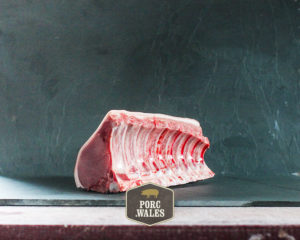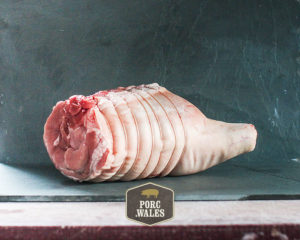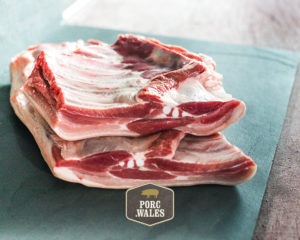 It’s a fact. Pork is the most popular meat that we choose to eat at home. As a result of this popularity, there is a growing demand for advice and guidance when it comes to choosing and cooking pork joints. They also want the reassurance that pork products are ethically sourced from local or quality assured supply chains.
It’s a fact. Pork is the most popular meat that we choose to eat at home. As a result of this popularity, there is a growing demand for advice and guidance when it comes to choosing and cooking pork joints. They also want the reassurance that pork products are ethically sourced from local or quality assured supply chains.
The team at Hugh Phillips Gower Butchers offers a selection of pork joints from pigs which are sourced from the nearest local farm in the Gelliwen Valley of Carmarthenshire and expertly butchered at the company’s dedicated slaughterhouse in Llanmorlais.
This expert team has also come up with advice and guidance on the different cuts of pork joints you can buy and the best ways to prepare and cook them.
 Choosing Pork Joints
Choosing Pork Joints
- Shoulder on the bone is best roasted on the bone and has a really excellent flavour, as meat from nearer the head of the pig is always more succulent, with a little more fat to keep it moist. The skin is dry with a reasonable layer of fat underneath, making this one of the best joints to get good crackling from.
- Loin of pork on the bone also has a great flavour. Once cooked, to serve simply carve between the bones or slice the meat away from the bones in one piece and then carve the meat thinly. A loin of pork can also be boned out and rolled for ease of carving.
- Rolled tenderloin of pork is a very lean cut of meat that is excellent when roasted, which can be helped by the addition of an extra layer of fat to prevent it from drying out during cooking (usually bacon). Tenderloin is excellent when cooked en-croute (in buttery pastry).
- Belly pork joint is a large, rectangular slab of meat that’s excellent for roasting, and is considered to be one of the tastiest cuts. It’s easier to carve if boned first. As always, the skin needs to be scored before cooking, and because it is quite a fatty joint, with a good layer of fat directly beneath the skin, it will give very moist, succulent meat and really good crackling if properly cooked.
- Leg of pork is one of the most commonly bought and most popular joints for roasting because of its leanness and served on the bone for extra flavour.
Tips for cooking pork joints
 As with all meat, before cooking, allow your pork joint to come to room temperature before you put it in the oven.
As with all meat, before cooking, allow your pork joint to come to room temperature before you put it in the oven.
For good crackling, make sure the skin is very dry before you cook it. Score the skin before roasting as this allows the fat from underneath to bubble up, crisping the skin as it does so. Use a Stanley knife or a very sharp kitchen knife and, taking care not to go through to the flesh, make incisions 1cm apart. Sprinkle the skin liberally with salt just before you put it into the hot oven. If salted too far in advance it will attract moisture.
When it comes to cooking time, start roasting pork at a high temperature (240°C/ fan220°C/gas 9 or as high as your oven will go) to get the heat through to the centre of the joint, and get the crackling off to a good start. After 20 minutes, reduce the temperature to 180°C/fan160°C/gas 4 and continue to roast for 25 minutes per 450g.
To check that your pork is cooked, pierce the centre of meat from the underside of the joint with a fine skewer. There should be no traces of pink left in the juices. Clear juices indicate the pork is sufficiently cooked, but that the meat will still be beautifully moist.
Always leave meat to rest before carving.
Check out this delicious Delia Smith recipe for roast pork with crackling.
Hugh Phillips Gower Butcher
In addition to the range of pork joints and other pork products available at our shop in Swansea Market, you can also order all of our pork joints from our online store www.bestonlinebutcher.co.uk
Orders are despatched on Tuesdays and Thursdays and all our products are packaged in sustainable and environmentally friendly packaging.
Order before the end of February and get £5 off your next order:



 Choosing Pork Joints
Choosing Pork Joints